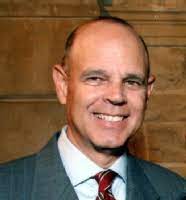
Hopelessly divided California: home to a host of different net zero approaches
Climate policies of pension funds across the Golden State range from full divestment from oil and gas to the notion that being a net zero investor is simply 'untenable'
A somewhat logical assumption may be that California's pension funds reflect the attitudes of a state legislature that seems keenly aware of the implications of climate change.
Even when former President Trump was pulling the US out of the Paris Agreement at a federal level and dropped most green policies, America's most populated state continued to push hard for environmental policies.
Inevitably, this led to clashes, such as the revocation of the state’s vehicle emissions targets, since reversed, and a failed lawsuit by the Department of Justice against the California-Quebec cap and trade agreement.
To the outside world, California seemed the natural home of the net zero asset owner.
Yet, looking beyond the broad strokes of what the state's authorities stand for lies a mixed outlook on climate issues by California's pension funds, and the way divestment and portfolio decarbonisation are handled by numerous retirement schemes in the state.
For the sizeable Los Angeles County Employees Retirement Association (LACERA), which has assets under management of about $73 billion, progress to achieving the Paris Agreement goals is key to staving off the most severe economic impacts of climate change.
This strategy helps LACERA to meet its investment aims, though how to approach this goal requires nuance, according to Scott Zdrazil, principal investment officer at LACERA.
“The energy transition is not a binary option for asset owners regarding whether or not to divest," Zdrazil explained.
"Deliberate, ongoing portfolio analytics and engagement are key tools in successfully navigating the LACERA portfolio through the energy transition," he added.
“It is LACERA’s policy to generally avoid rigid investment restrictions that limit our investible universe and impede analysis to inform the best investment decision in dynamic financial markets."
"Due to data inconsistency from different methodology and approaches, and unfortunately an ever-evolving regulatory environment, [net zero] is not a consistent target."

The pension fund uses data analytics to evaluate climate-related investment risks and opportunities across the fund, and to make investment decisions related to the energy transition away from oil and gas, Zdrazil said.
The scheme has committed $3 billion to private funds with exposure to renewables and raw materials that will be used in the transition.
'Net zero not an adopted policy'
Meanwhile, 250 miles north, the City of Fresno Retirement Systems (CFRS) may be a relative minnow in the California asset owner space with $1.6 billion in AuM, yet the scheme does hold a firm position on how climate change impacts its investment outlook, namely not at all.
According to Robert Theller, retirement administrator at CFRS, the idea to push for divestment from or cessation of oil and gas holdings is “untenable”.
“Net zero is not an adopted policy at CFRS. Due to data inconsistency from different methodology and approaches, and unfortunately an ever-evolving regulatory environment means, it is not a consistent target," Theller told Net Zero Investor.
"Since the goals keep changing and CFRS keeps getting conflicting manager disclosures we will not be adopting a policy soon," he said.
Also read
High inflation and rising costs increasingly a ‘disaster’ for UK clean energy investors
The CFRS position is one that is shared by many asset owners across the US, particularly in states that have passed expressly anti-ESG legislation in the last year.
As to the fund’s reasoning behind a continuing aberrance to net zero, Theller points to data showing continuing worldwide dependence on oil, citing data from Statista showing that oil consumption has increased worldwide from 2.2. billion metric tonnes in 1970 to 4.4 billion metric tonnes in 2022.
“The energy transition is not a binary option for asset owners regarding whether or not to divest."

On the complete other side of the spectrum stands the University of California, which in 2020 fully divested its $126 billion portfolio away from fossil fuels and fully embraced sustainable investment options, such as wind and solar power.
“As long-term investors, we believe the university and its stakeholders are much better served by investing in promising opportunities in the alternative energy field rather than gambling on oil and gas," explained Richard Sherman, chair of the UC board investments committee.
In 2021, the California State University System followed in the UC footsteps, committing to no longer pursue new oil and gas investments and shedding $162 million in such holdings from its $5.2 billion portfolio.
Divestment as law
Freshly proposed state legislation carried the potential to have a seismic effect on the investment strategies of the largest pension funds in California.
If signed into law, the proposed Senate Bill 252 would have prohibited the CalPERS Board of Administration, along with the California State Teachers’ Retirement System (CalSTRS) Teachers’ Retirement Board, from making new investments in fossil fuel companies.
It would also require both pension funds to divest existing fossil fuel company investments on or before 1 July 2030.
However, the piece of legislation has been placed on hold for 2023, with SB 252 likely to be voted on in the state’s 2024 legislative session.
"As long-term investors, we are much better served by investing in the alternative energy field rather than gambling on oil and gas."

Despite the delay, with the legislation in the air, the reaction to such enforced divestment has been far from eager from the two impacted pension funds.
A spokesperson for CalSTRS has stated: “Divestment is a last resort action that can have a lasting negative impact on the health of the Teachers’ Retirement Fund, while also severely limiting our ability to shape corporate behaviour for long-term sustainable growth.”
CalPERS also came out in opposition of SB 252. By a vote of 7-1, the board agreed with a staff recommendation to oppose the bill, which if enacted would oblige the fund to divest $9.4 billion in holdings.
The pension fund went so far as to claim that divestment has little, if any, impact on a company’s operations and therefore “does nothing” to reduce greenhouse emissions.
“The companies in question can easily replace CalPERS with new investors, ones who are unlikely to speak up as loudly or as consistently as we have about the urgent need to move toward a low-carbon economy," said Marcie Frost, since 2016 the chief executive of CalPERS.
The positions of CalSTRS and CalPERS stand in stark contrast to the state’s university pension funds, as well as most asset owners on the other side of the pond, who generally take a more hardliner approach.
For example, the Church of England Pensions Board recently made global headlines when it took the dramatic step to divest entirely from oil and gas, following years of engagement with major players in the fossil fuel industry, such as oil giant Shell.
Also read
One year on: are US investors banking on the Inflation Reduction Act?




